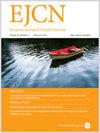Effectiveness and safety study of formula containing probiotics, prebiotics, synbiotics on fullterm infants’ growth - a systematic review and meta-analysis of randomized controlled study
IF 3.3
3区 医学
Q2 NUTRITION & DIETETICS
引用次数: 0
Abstract
Probiotics, prebiotics, and synbiotics, are hot topics of research and have been shown to improve the body’s disease state and promote health. Analysis of whether infant formula containing probiotcs, prebiotics, synbiotics is beneficial to infant and child growth. We systematically searched multiple electronic databases (PubMed, Web of Science, The Cochrane Library, Embase) to identify eligible studies published from 1966 to December 25, 2022. Included studies were randomized controlled trials (RCTs) studying the influence of milk powder containing probiotcs, prebiotics, synbiotics on infants and children’s growth. RevMan 5.4 was used to analyze the data. A total of 55 RCTs with a total sample size of 8868 participants met the inclusion criteria. Milk powder with probiotics, prebiotics, synbiotics does not significantly improve the growth of infants and children (Weight, height, BMI, and Head Circumference); The incidence of minor adverse events (OR 0.88, 95% CI 0.70–1.11 P = 0.28) and serious adverse events (OR 0.92, 95% CI 0.62–1.36 P = 0.67) was also comparable to the control group; The intestinal microbial diversity of infants consuming probiotcs, prebiotics, synbiotics supplemented formula was lower than that of infants consuming formula without probiotcs, prebiotics, synbiotics (SMD –0.88, 95% CI –1.66- –0.1 P = 0.03), but the abundance of individual beneficial flora was increased. (SMD 1.62, 95%CI 0.61–2.62 P = 0.002). In particular, the abundance of Lactobacillus (SMD 1.62, 95% CI 0.61–2.62 P = 0.002). For metabolites, synbiotics increased fecal antibody concentrations (SMD 0.47, 95% CI 0.08-0.86 P = 0.02), but fecal short-chain fatty acid concentrations remained balanced in both groups (SMD 0.05 95% CI –0.17–0.28 P = 0.64). Compared to the control group, infants who consumed formula with prebiotics had softer stools (SMD −1.47, 95% CI −2.23 to −0.7 P = 0.002) and lower stool pH (SMD −0.82, 95% CI −1.15- −0.5 P < 0.00001), there is also more frequency of bowel movements (SMD 0.27, 95% CI 0.09–0.44 P = 0.002). Probiotcs, prebiotics, synbiotics supplemented formulas significantly increased abundance of individual probiotics, alter intestinal antibody secretion, and improve bowel movements. Incidence of adverse reactions did not differ between the two groups. So we can choose formula-supplemented probiotcs, prebiotics, synbiotics to maintain the intestinal health of infants.

含有益生菌、益生元和合成益生菌的配方奶粉对足月儿生长的有效性和安全性研究--随机对照研究的系统回顾和荟萃分析。
背景和目的:益生菌、益生元和合生元是研究的热门话题,已被证明可以改善人体的疾病状态并促进健康。分析含有益生菌、益生元、合生元的婴儿配方奶粉是否有利于婴幼儿的生长:我们系统地检索了多个电子数据库(PubMed、Web of Science、The Cochrane Library、Embase),以确定从 1966 年到 2022 年 12 月 25 日发表的符合条件的研究。纳入的研究均为随机对照试验(RCT),这些试验研究了含有益生元、益生素和合生元的奶粉对婴幼儿生长的影响。使用RevMan 5.4对数据进行分析:共有 55 项 RCT 符合纳入标准,样本量共计 8868 人。添加益生菌、益生元、合生元的奶粉并不能显著改善婴幼儿的生长状况(体重、身高、体重指数和头围);轻微不良事件(OR 0.88,95% CI 0.70-1.11 P = 0.28)和严重不良事件(OR 0.92,95% CI 0.62-1.36 P = 0.67)也与对照组相当;食用添加益生菌、益生元、合生元配方奶粉的婴儿肠道微生物多样性低于食用未添加益生菌、益生元、合生元配方奶粉的婴儿(SMD -0.88,95% CI -1.66- -0.1 P = 0.03),但个别有益菌群的丰度有所增加。(SMD 1.62,95%CI 0.61-2.62 P = 0.002)。特别是乳酸杆菌的数量(SMD 1.62,95% CI 0.61-2.62 P = 0.002)。在代谢物方面,益生菌提高了粪便中抗体的浓度(SMD 0.47,95% CI 0.08-0.86 P = 0.02),但两组婴儿粪便中短链脂肪酸的浓度保持平衡(SMD 0.05 95% CI -0.17-0.28 P = 0.64)。与对照组相比,食用含益生元配方奶粉的婴儿粪便更软(SMD -1.47,95% CI -2.23 至 -0.7 P = 0.002),粪便 pH 值更低(SMD -0.82,95% CI -1.15 至 -0.5 P 结论:益生元、益生菌、益生菌配方奶粉和益生元配方奶粉对婴儿的健康有益:添加了益生菌、益生元和合生元的配方能显著提高单个益生菌的丰度,改变肠道抗体分泌,改善肠道蠕动。两组的不良反应发生率没有差异。因此,我们可以选择配方添加益生菌、益生元、合生元来维护婴儿的肠道健康。
本文章由计算机程序翻译,如有差异,请以英文原文为准。
求助全文
约1分钟内获得全文
求助全文
来源期刊
CiteScore
10.60
自引率
2.10%
发文量
189
审稿时长
3-6 weeks
期刊介绍:
The European Journal of Clinical Nutrition (EJCN) is an international, peer-reviewed journal covering all aspects of human and clinical nutrition. The journal welcomes original research, reviews, case reports and brief communications based on clinical, metabolic and epidemiological studies that describe methodologies, mechanisms, associations and benefits of nutritional interventions for clinical disease and health promotion.
Topics of interest include but are not limited to:
Nutrition and Health (including climate and ecological aspects)
Metabolism & Metabolomics
Genomics and personalized strategies in nutrition
Nutrition during the early life cycle
Health issues and nutrition in the elderly
Phenotyping in clinical nutrition
Nutrition in acute and chronic diseases
The double burden of ''malnutrition'': Under-nutrition and Obesity
Prevention of Non Communicable Diseases (NCD)

 求助内容:
求助内容: 应助结果提醒方式:
应助结果提醒方式:


